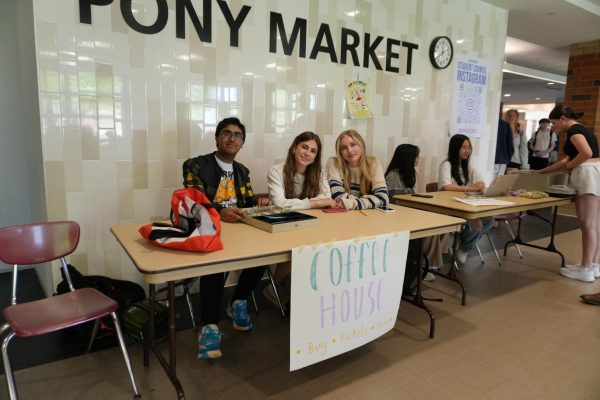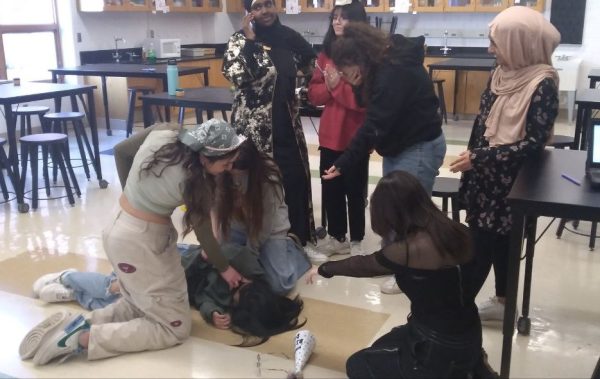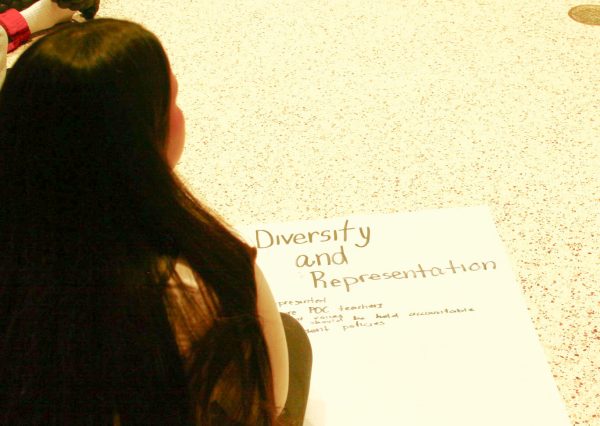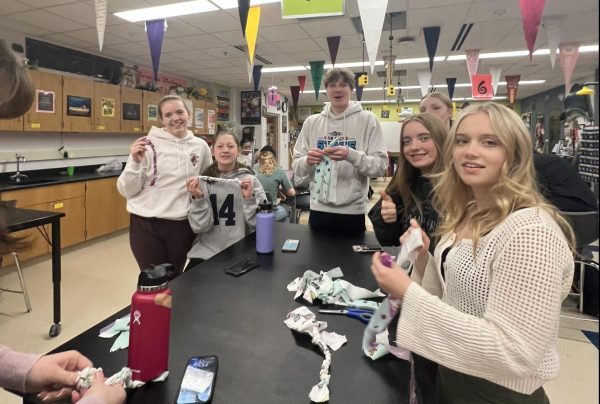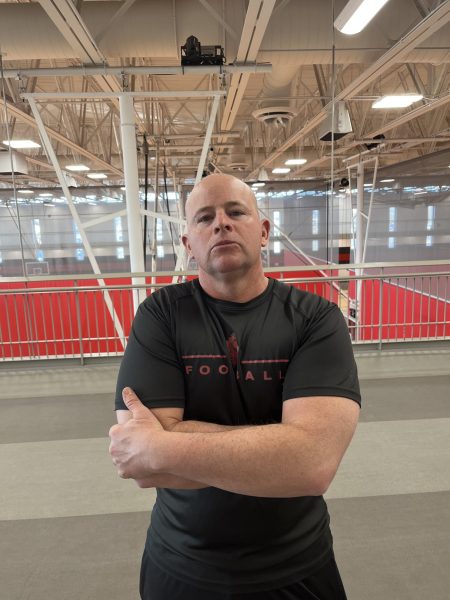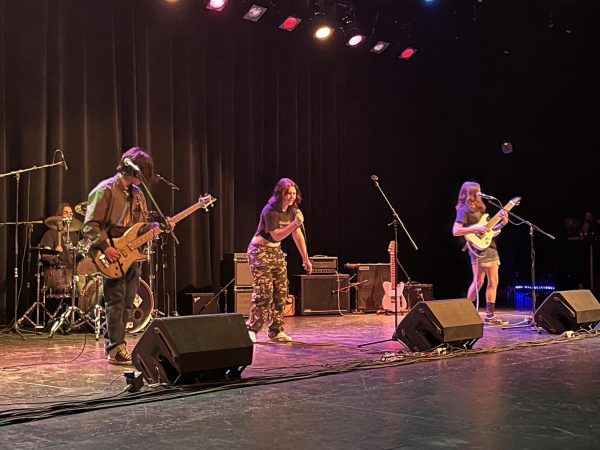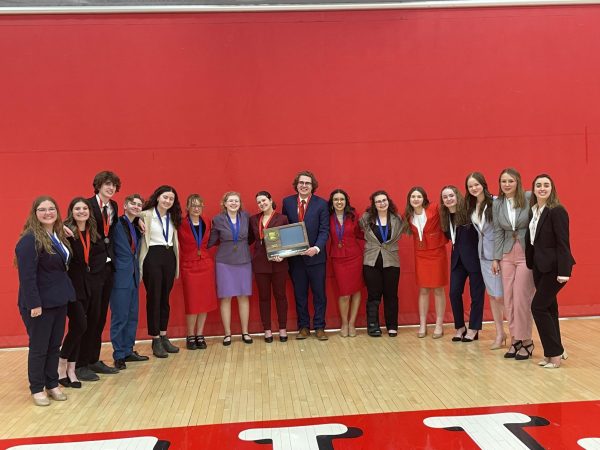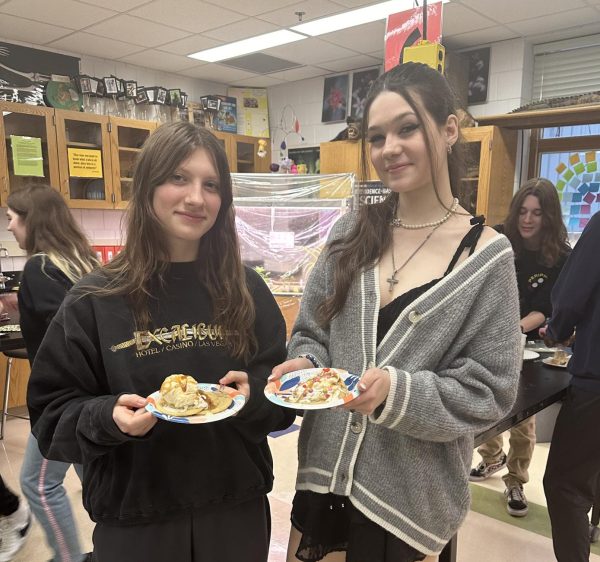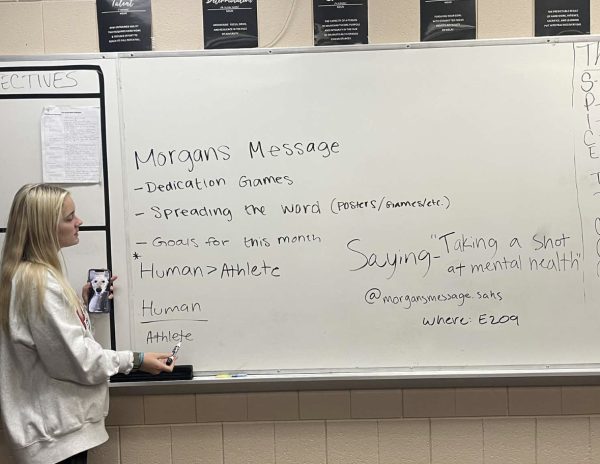Robotics team shares future goals
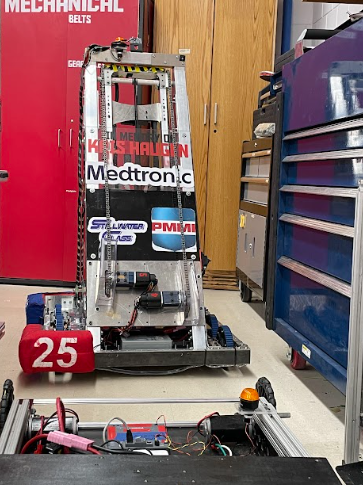
This robot competed against other schools, playing a unique game that it is programed to play.
Throughout the year, the robotics team has been improving constantly in building skill and programming quality, and now they are ready to share a season recap.
The robotics team’s main season goal is to create a functional robot that can compete in a specific game with rules made by the association administrators. They are given a roughly six-week building period (Jan.-April) to build the most functional robot possible with the given challenges.
During the competition season, students compete with schools from around the U.S. to see who has the most functional robot with the given tasks. Usually, there are two big competitions during the building period where competitors meet at big venues like the University of Minnesota or other closer locations.
“So we are competing with teams worldwide and all over the U.S.; that is kind of what we do, otherwise were working on our projects,” team captain junior Fredrick Ribolzi said.
During this building period, club members put many hours in the building room, perfecting their robots.
“During the actual competition season, we meet pretty much every day, including weekends. On school days, we are probably meeting until eight at the latest, or maybe not at the latest, but at least ten at the latest. Then on the weekends, we will stay there all day. There have been days I have stayed there until two in the morning on weekends. That six weeks to build a robot is insufficient, so we are there a lot,” Ribolzi said.
Sophomore Mya Brainard is a part of the business side of the robotics club; in that end-of-production, students focus on “contacting sponsors and like giant multimillion-dollar companies.” One of the best things about the robotics team is the close-knit community.
The team works off each other’s backs, helping however they can. “It is like one giant chaotic family, yeah we go on team dinners, and we go bowling and stuff; it is enjoyable,” Brainard added.
So we are competing with teams worldwide and all over the U.S.; that is kind of what we do, otherwise were working on our projects
— Fredrick Ribolz
One of the primary jobs of the coaches is getting members familiar with robot mechanics and teaching them the fundamentals behind the building.
“The team meets and talks with mentors, and you know, they go out and talk about who would be good leaders and who would fit where, and then talk about and then ask the group who is interested in doing different roles, and then basically, try to assign people to roles they are interested in that people that we think will be good fits for those roles,” head coach Todd Kapsner said.
In addition to the main project, students work on mini-projects, focusing on different areas of programming and building.
“So we are going to elementary and middle schools for presentations. We were just there yesterday. We have been building many bots… Tom and Jerry bots, we have been working on our T-shirt cannon and all of our robots chilling in the corners,” Brainard said.
With the season ending not too long ago, the members have time to reflect on their accomplishments and what they have achieved while working together. From the beginning of their competition robot to the final product, many changes took place to make it the best it could be.
“I am most proud of this season is the, I would say, just like the iteration we went through on the robot this year, the difference between our robot at the end of the six weeks versus after the first competition versus after the second competition is amazing.” Ribolzi said, “So a lot of the things that ended up with many problems at the first competition we worked through it, we troubleshoot, and then during that two weeks we have made many changes like we have our end effector or like grabber that we can use to pick up game pieces changed completely. We completely redid the design, spent a bunch of time whiteboarding and figuring out what was wrong with the first one at the competition, and completely redid it at the second. It worked a lot better. We still have other problems, but we worked through it, and like on the last day of competition, we had a very, like, a good working robot.”
“You can come up with zero knowledge of anything, and we will teach you how to use everything well; we will have a fun time,” Brainard said.
Robotics is a bonded community working together to improve the future with the current level of technology.
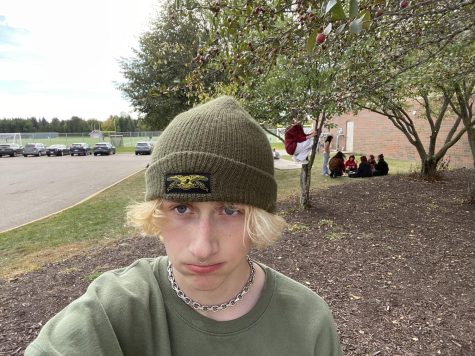
I'm in 11th grade and I'm on the social media team. I'm on the ultimate frisbee team and I also like skating and snowboarding. I really like my cats and...



